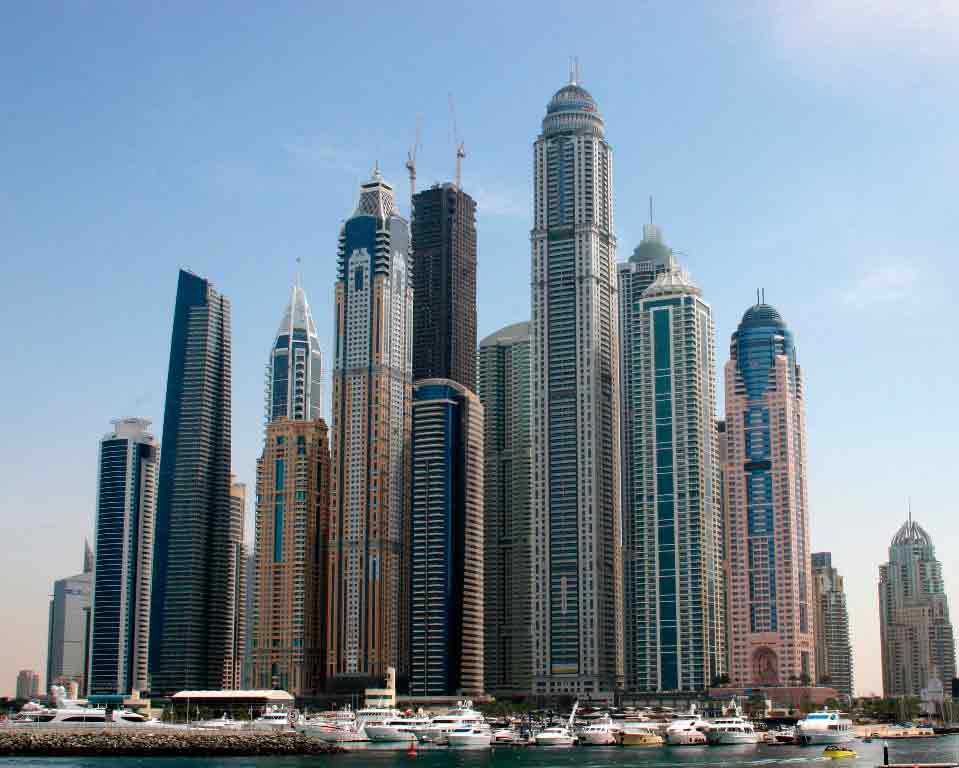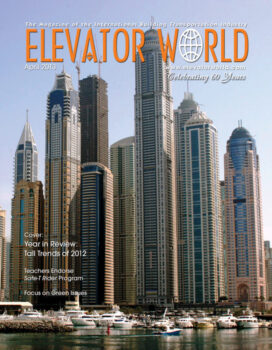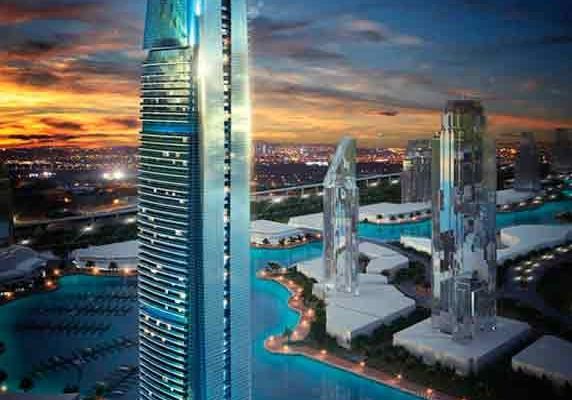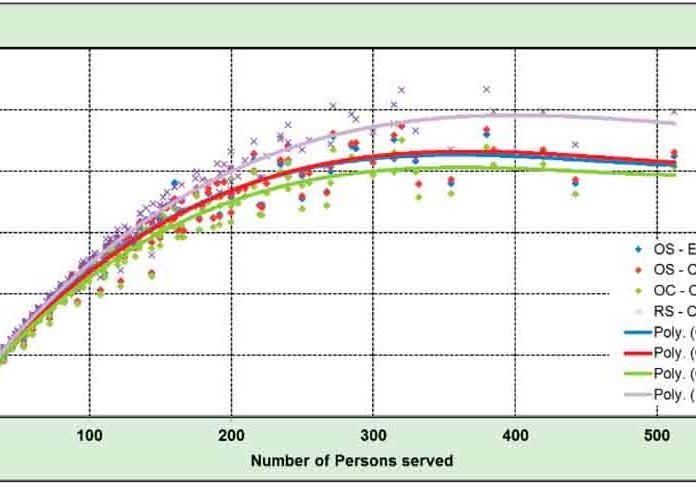Year in Review: Tall Trends of 2012
Apr 1, 2013

This 2012 review covers completed towers around the world, as well as construction trends the building industry can expect to see. Cover photo by Marc Tey
by Kevin Brass, Dr. Antony Wood and Marty Carver
For the first time in six years, the number of tall buildings completed annually around the world declined in 2012, as the consequential effects of the 2008/2009 global financial crisis became evident in tall-building construction in many Western countries. Sixty-six buildings taller than 200 m were completed during 2012 – the third most in history, but down from the 82 finished in 2011. This number of completions was slightly lower than expected, with some projects under construction delayed or stalled. However, several of the projects forecast to finish in 2012 are now expected to be complete in 2013 and 2014, with global completion numbers expected to rise again next year.
The year also saw several important milestones:
- Mecca Royal Clock Tower Hotel (at 601 m, the second-tallest building in the world) was completed in Saudi Arabia. It is only the world’s second megatall, defined by the Council on Tall Buildings and Urban Habitat (CTBUH) as a building taller than 600 m.
- Four of the six tallest buildings completed in 2012 were in Dubai, including the world’s tallest hotel, the 355-m-high JW Marriott Marquis.
- The title of “Tallest Residential Building” exchanged hands twice in 2012, with both recipients located in the Dubai Marina.
- Fast-growing China finished 22 buildings taller than 200 m in 2012, 33% of the global number.
- Mecca had the most 200-m-tall completions in the world, with five.
- Canada added four buildings taller than 200 m, the most Canada has ever completed in a single year.
- Twelve of the 66 buildings completed in 2012 broke onto the top-100 list of tallest buildings in the world, representing a 12% change in the tallest 100 in a single year.
With the addition of 66 buildings in 2012, the global number of buildings taller than 200 m has almost tripled since 2000, increasing from 263 to 756 at the end of 2012. The recent slowdown in the West was partially offset by tall-building construction in the Middle East and Asia, particularly China. In total, the year saw 35 and 16 buildings taller than 200 m completed in Asia and the Middle East, respectively. In contrast, six were completed in North America, including only two in the U.S., which once dominated tall-building development.
Several factors are spurring the move toward taller development. The limited availability of land in urban centers is driving up prices and prompting developers to build taller to recuperate their investments. Several countries, including China, are also in the midst of a dramatic shift from rural to urban economies. In addition, new technologies and building systems are increasing the efficiency of tall buildings, allowing developers to cost-effectively create taller projects.
But the biggest factor, in some cities, is a sharp increase in prices for luxury apartments. In New York City, a full-floor apartment in One57, a project still under construction, sold for US$90 million in 2012. Forty-one of the tallest 100 projects completed in 2012 featured a residential component. Early in 2012, 23 Marina in Dubai earned the title of world’s tallest residential building at 393 m tall. A few months later, construction on the 413-m-tall Princess Tower was completed, with it taking the title of world’s tallest all-residential building. The four tallest residential buildings in the world are now located in Dubai.
Asia and Australia
China
The 22 buildings completed in China in 2012 were spread around 13 cities; Guangzhou was the busiest, completing four projects. Notable projects completed in 2012 include the 309-m-tall Pearl River Tower in Guangzhou, a Skidmore, Owings & Merrill (SOM)-designed tower hailed for its energy-efficient elements. The project includes wind turbines to generate energy for the building, as well as a double-façade curtain wall, radiant ceilings, solar panels, daylight harvesting and an under-floor ventilation system.
Projections show that far from slowing, China’s tall building boom will continue in the next few years. Projects far along in construction include the 660-m-tall Ping An Finance Center in Shenzhen, 636-m-tall Wuhan Greenland Center and 632-m-tall Shanghai Tower – three of the tallest towers in the world. Also on the horizon: the much-discussed 838-m-tall tower built using a prefabricated system proposed by Broad Sustainable Building.
South Korea
South Korea, one of the most active builders in recent years, only completed three buildings taller than 200 m in 2012, the fewest since 2008, when it completed two. The tallest completed last year was Three International Finance Center, a 284-m-tall tower in Seoul. South Korea now has 38 buildings taller than 200 m – ranking it fourth in the world behind China, the U.S. and the U.A.E. – and it continues to build new tall-building districts, with nine buildings taller than 200 m scheduled for completion in 2013.
Australia
Australia completed three buildings taller than 200 m in 2012. These were the first to surpass the 200-m threshold in the country since 2007. Tall-building development in Australia has always been sporadic, with an increase in development often followed by construction droughts. In 2005, Australia completed four buildings taller than 200 m, including the 323-m-tall Q1 on the Gold Coast, which remains Australia’s tallest. From 2007 to 2011, there were no towers taller than 200 m completed. The three buildings taller than 200 m completed in 2012 mark the second-highest completion total in Australia’s history, tying its output in 1992.
Middle East
Dubai
Dubai continues to be a significant market for tall-building construction, despite its much-publicized drop-off in development after 2008. Four of the six tallest buildings completed globally in 2012 are in Dubai. The average height of these four buildings is 385 m, in contrast to an average of 310 m for the four buildings completed in Guangzhou and an average of 319 m for the five buildings completed in Mecca. Dubai, which boasts the world’s tallest building, the 828-m-tall Burj Khalifa, did not have a single building taller than 200 m before 1999. In 2012, several new projects were proposed by the government, although 25 projects taller than 400 m have been either stalled or cancelled in Dubai, according to data tracked by the CTBUH Skyscraper Center.
Saudi Arabia
Saudi Arabia has not been known for significant numbers of tall buildings, but that is changing. Seven buildings taller than 200 m were completed in 2012, including the Mecca Clock Tower Hotel. More buildings taller than 200 m were completed in Mecca than in any other city in the world in 2012. The clock tower is part of the Abraj Al-Bait complex, which features seven buildings taller than 200 m. Four more of the towers in the project were completed in 2012: the Zam Zam Tower and Hajar Tower, each listed at 265 m. Another notable building completed in 2012 was the 258-m-tall Tamkeen Tower, the third-tallest building in Riyadh.
Saudi Arabia currently has 12 buildings 200 m tall or taller, but in the next few years that number could double. Three supertall towers, defined as buildings taller than 300 m, are under construction in Riyadh, with two supertalls in development in Jeddah. The under-construction numbers do not include Kingdom Tower, the 1-km-plus project in Jeddah. As of the time of this writing, construction was expected to begin on Kingdom Tower early in 2013.
Abu Dhabi
Abu Dhabi only completed one building taller than 200 m in 2012, the 268-m-tall Nation Towers, with a distinctive sky bridge connecting them. This lone completion in 2012 compares to seven towers finished in 2011, but the numbers are deceiving. The pace of construction slowed in the emirate in the wake of the economic slowdown, which hit sister emirate Dubai particularly hard, but construction is continuing on several large-scale developments around Abu Dhabi. Another 13 towers taller than 200 m are under construction and slated for completion in the next three years.
The Americas
Canada
Canada has become a hotspot for tall-building development. Four buildings taller than 200 m were completed in Canada in 2012, including the 277-m-tall Trump International Hotel and Tower in Toronto. The list of notable completions also included The Bow, a 237-m-tall tower in Calgary with a unique diagrid structural system.
But the epicenter of Canadian tall building development is Toronto, where 15 buildings taller than 150 m, more than any other city in the Western Hemisphere, are under construction. All five of the towers taller than 200 m under construction are residential, as the city looks to create new urban centers. By 2015, Toronto will likely have 44 buildings taller than 150 m, up from 13 in 2005. However, Toronto is not alone. Vancouver and Calgary are also growing taller. By the end of 2015, the number of buildings in Canada taller than 150 m is expected to grow to 73, almost triple the 26 in the country in 1995.
Panama
The residential market is powering the construction surge in Panama City, which is developing into a Miami-like center for second-home buyers from across the region. The expansion of the Panama Canal has also attracted a new level of business interest. The tallest building completed in the country in 2012 was the residential Torre Vitri, which is only 3 m shorter than the 284-m-tall Trump Ocean Club International, the tallest building in Central America, which opened in 2011. The list of tall buildings completed in 2012 also includes the 233-m-tall Rivage and the 209-m-tall Oasis on the Bay, which are also residential towers. In the past five years, Panama City has completed 17 tall buildings taller than 200 m, including 10 in 2011; before 2008, there were none.
U.S.
Once the undisputed leader of skyscraper development, the U.S. dropped down the tables significantly for the number of annual 200-m-plus-tall tower completions. Only two buildings taller than 200 m were completed in 2012, led by the 257-m-tall Devon Headquarters in Oklahoma City, which is only the 38th-tallest tower in the U.S. The tall-building slowdown is largely attributed to the economic crisis, as well as the hangover of the previous building boom, which left many cities with an oversupply of office space.
But there are signs the U.S. is building again. In addition to the redevelopment of the World Trade Center, there are several tall projects under construction in New York City, including the 426-m-tall 432 Park, a residential tower, and the 306-m-tall One57, a residential/hotel project. Tall-building projects are also in the planning stages in San Francisco, Los Angeles and Seattle. However, only six buildings taller than 200 m are expected to be completed in the next few years, a far cry from the building construction once seen in the country.
Conclusion
Although the pace of completions slowed in 2012, there is no indication of a tall-building-construction slowdown. As 2012 closes, the industry is on the cusp of another burst of tall building development. In total, there are 437 buildings taller than 200 m under construction globally. It is likely the 2013 completion total will set a new record for tall-building completions, surpassing the 2011 total. In addition, the quest to grow taller continues. Of the projects under construction, 59 will join the list of the 100 tallest buildings in the world; eight will likely make the top 10. There are also 10 buildings taller than 500 m under construction, including three megatalls above 600 m in height.
Despite the economic crisis, tall-building construction is still an important driver for the revitalization of fast-growing urban centers around the world, particularly in Asia and the Middle East. At the same time, cities in Europe, South America and Africa are looking to grow vertically, while smaller markets like Panama City and Abu Dhabi continue to complete projects. The need to create efficient, high-density districts for people to live and work is pushing skylines higher, and there is no evidence those factors will subside anytime soon.
Visit the Online Extras at www.elevatorworld.com for CTBUH’s “Tall Buildings in Numbers,” a statistical study on all 200-m-plus-tall buildings completed in 2012.
Get more of Elevator World. Sign up for our free e-newsletter.









